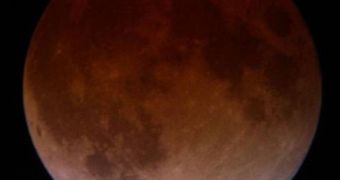Other than offering a very spectacular view, lunar eclipses are also useful for astronomy, as was proven in 2008. At that time, a group of experts investigating the surface of the satellite saw that, despite the fact that the Earth was completely obscuring the sunlight coming towards the Moon, its surface still shone with a reddish glow. This led the scientists to conclude that it must be light bent by Earth's atmosphere that created this phenomenon, and they quickly rushed to extrapolate ways in which this discovery could be applied to detecting exoplanets in our galaxy and beyond.
The observations that spawned the new theory were made on August 16th, 2008, by a team of experts from the Institute of Astrophysics of the Canary Islands, in Spain. They realized that our atmosphere bent the sunlight we got, and then passed its own to the Moon, lighting it up in the mysterious reddish haze. Using a number of ground-based telescopes, they then analyzed the light that bounced back from the natural satellite and the “transmission spectrum” that again passed through the atmosphere.
The analysis was expected to return traces of methane and oxygen, but the discovery of nitrogen, and of traces of the ionosphere, was completely unexpected. Despite the fact that it makes up the bulk of atmospheric gases, nitrogen is notoriously hard to discover, but it became apparent when the team analyzed the spectrum received from the Moon. Additionally, they said at the time, the atmosphere was known to absorb certain wavelengths of light, while the ionosphere stopped some of the most energetic photons hitting it.
“We find that these signatures are actually much stronger than the models predicted. They will be easier to detect on an exosolar planet,” Enric Pallé, an astronomer at the Institute of Astrophysics and also the lead author of a new study, published on June 10th in the prestigious scientific journal Nature, says of those spectrum readings. The expert believes that, as we look for exoplanets, we should shift our focus from detecting the light reflecting off the planet itself (a process in which this light could easily be mixed with that of the planet's parent star, on account of the distance between it and the Earth), to analyzing the spectral readings it gives out.
Astronomers now turn to the planned James Webb Space Telescope, scheduled to replace Hubble in 2013 at the earliest, and which will carry with it instruments able to perform transmission spectroscopy, Nature News reports. The $4,9-billion observatory will be the most complex and sophisticated piece of technology sent in space, and will survey the skies from an L2 point around Earth, similar to those to which Herschel and Planck are currently heading.

 14 DAY TRIAL //
14 DAY TRIAL //